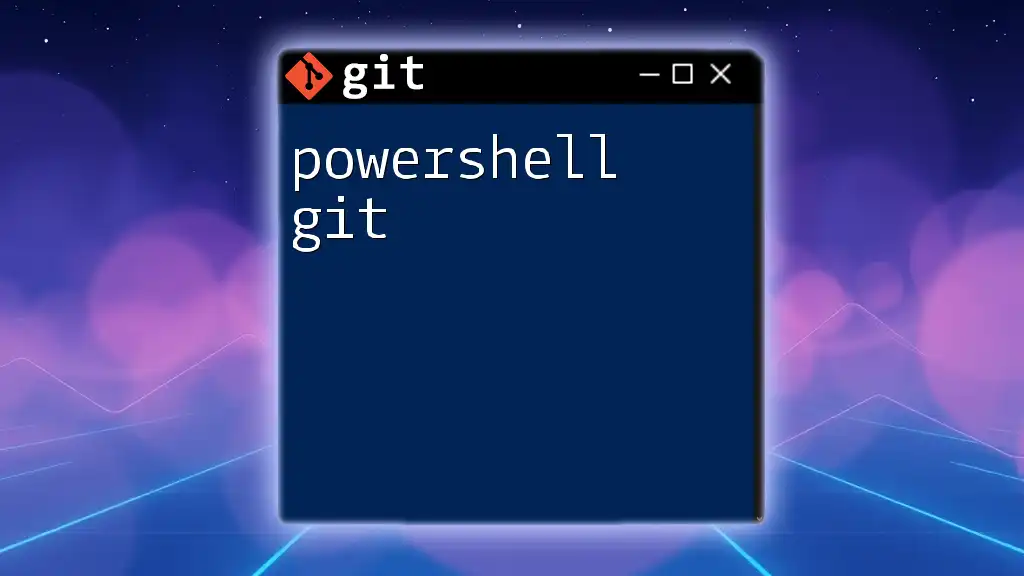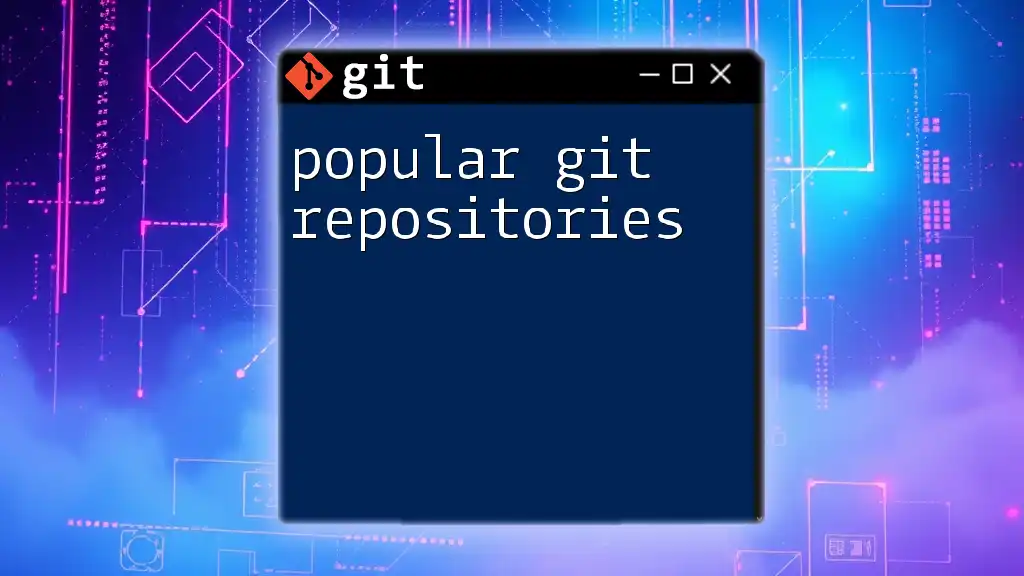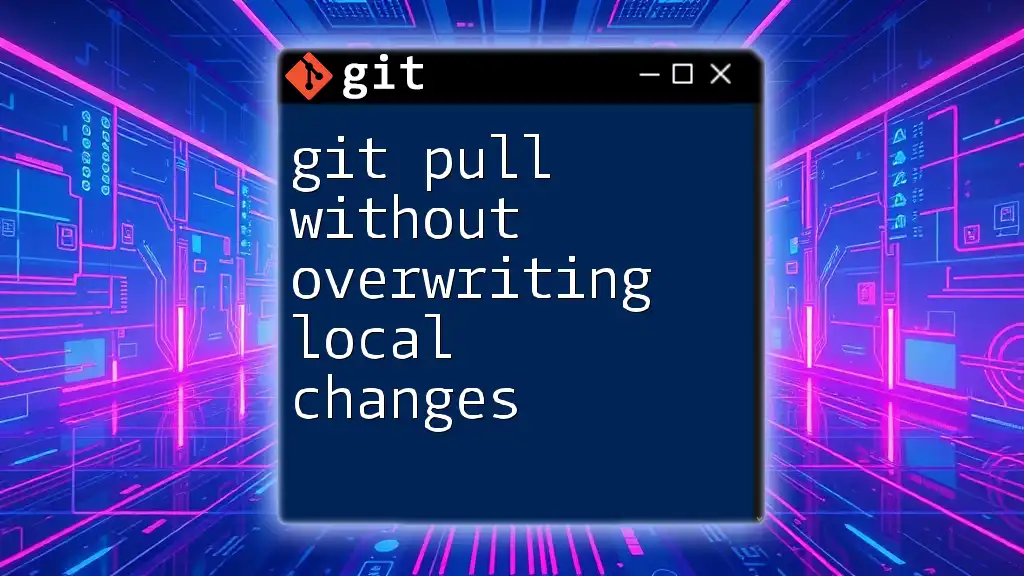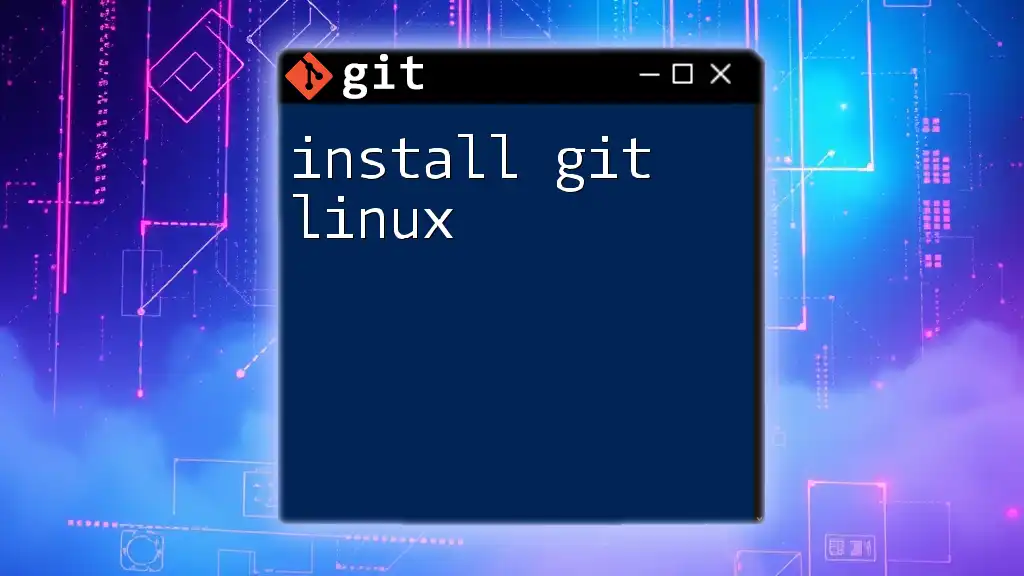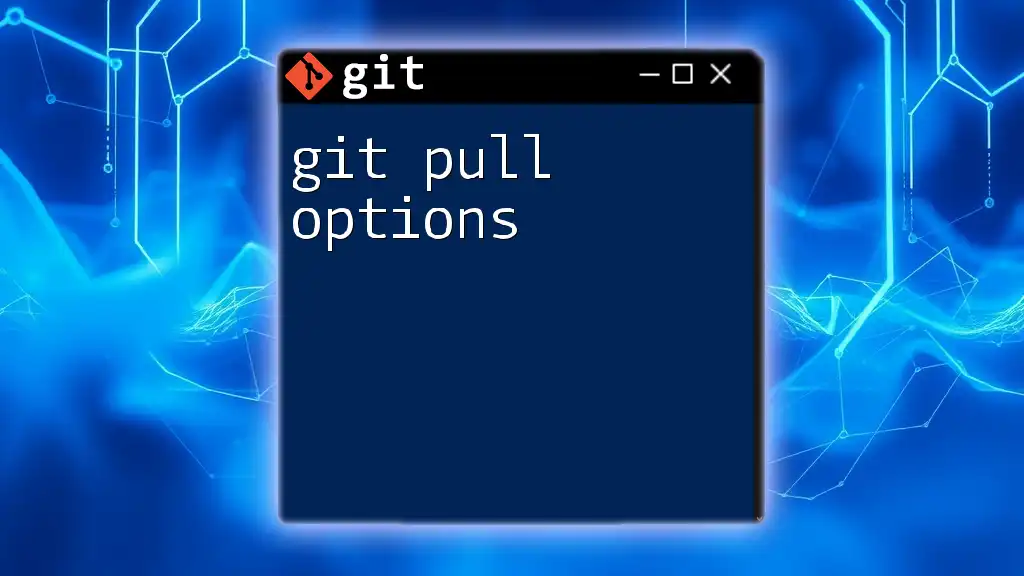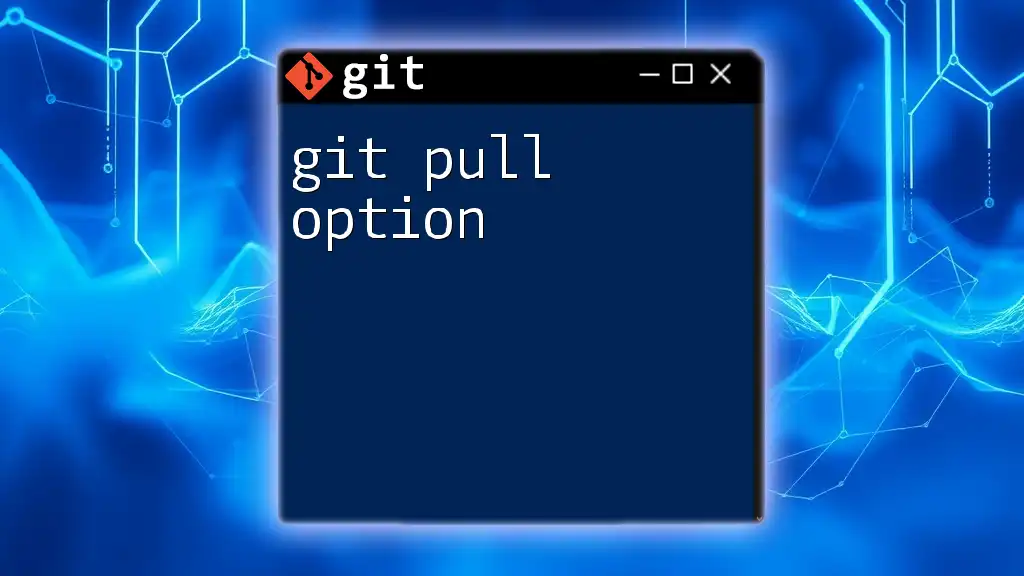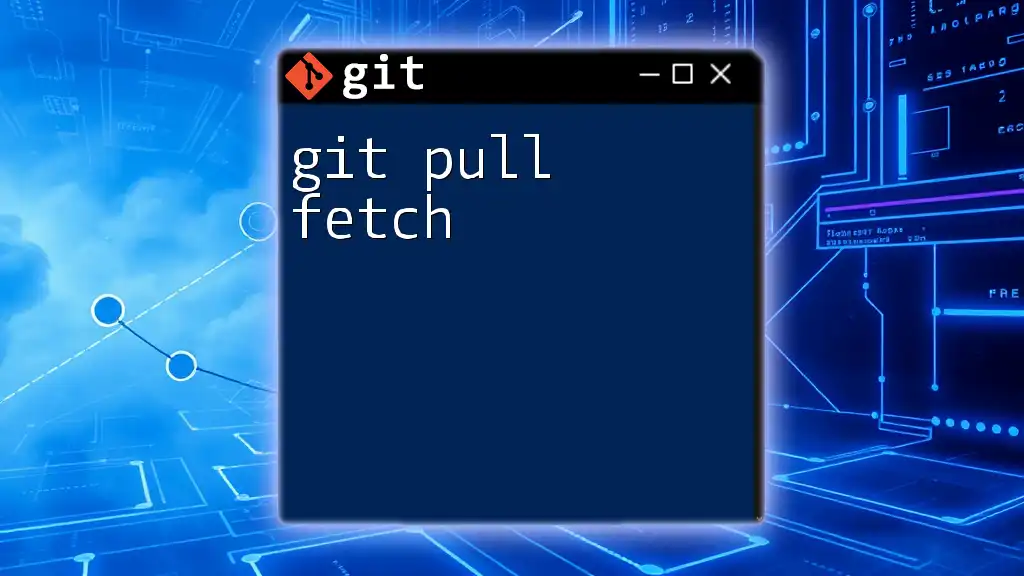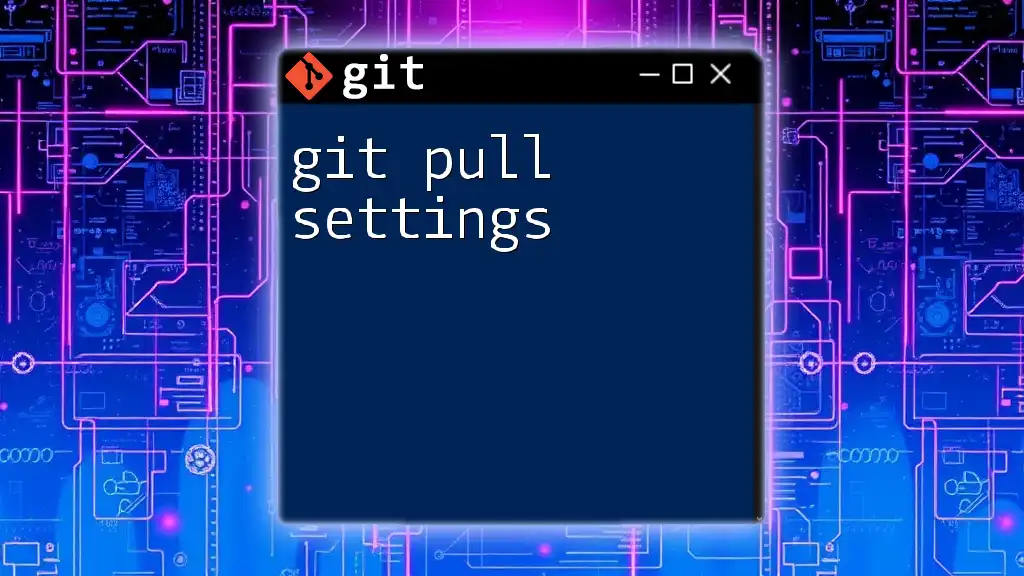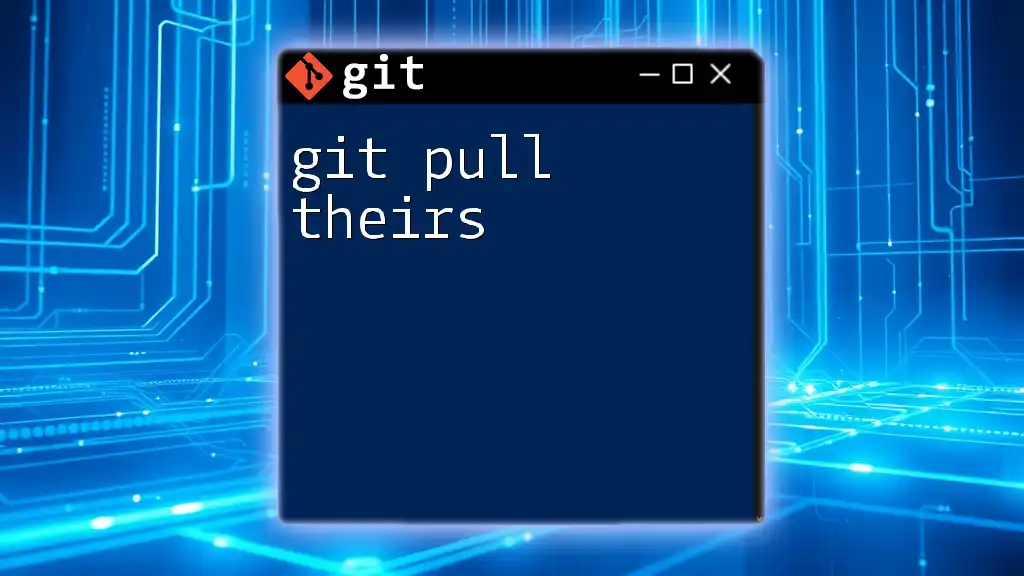The `git pull` command is used to fetch and integrate changes from a remote repository into your current branch, effectively updating your local codebase.
git pull origin main
What is `git pull`?
The `git pull` command is a critical tool in your Git toolkit, allowing you to update your local repository with changes from a remote repository. It serves as a combination of two commands: fetching and merging. Understanding how `git pull` works is essential for effective collaboration in projects, especially when multiple developers contribute code simultaneously.
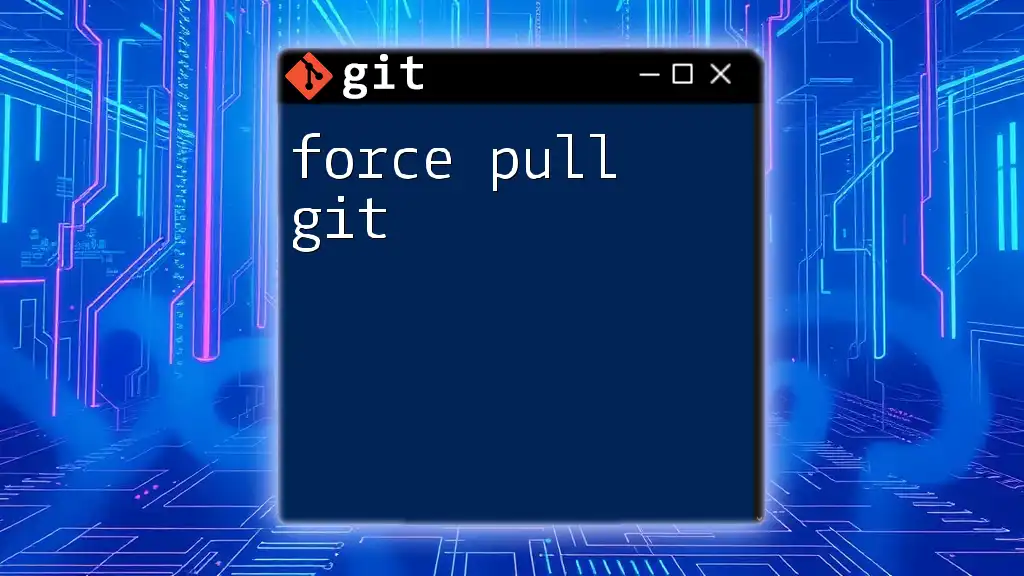
Anatomy of the `git pull` Command
Syntax of `git pull`
The basic syntax for the `git pull` command is as follows:
git pull [<repository> [<refspec>...]]
Here’s a detailed breakdown of the components:
- repository: This typically refers to the remote repository you want to pull changes from, such as `origin`.
- refspec: This defines which branch or specific set of changes you're interested in. If omitted, Git will default to the remote branch that corresponds to your current local branch.
Fetching and Merging
When you execute `git pull`, two main processes occur: fetching and merging.
-
Fetching: First, the command retrieves the latest changes from the specified remote repository. This ensures that you're aware of any new commits made by others since your last update.
-
Merging: After fetching, Git will automatically attempt to merge those changes into your current branch.
For example, if you run the following command:
git pull origin main
This command pulls the latest changes from the `main` branch of the remote repository `origin` and merges them into your local `main` branch.

Common Use Cases for `git pull`
Updating Your Local Repository
One of the primary roles of `git pull` is to keep your local repository in sync with the remote repository. Regularly pulling changes is a best practice to ensure that you’re always working with the most current code base, particularly in team environments.
Consider a scenario where you’re collaborating on a project with multiple team members. If someone else pushes changes, you can retrieve those updates swiftly by simply executing:
git pull
By default, this will pull from the remote repository associated with your current branch.
Handling Conflicts
Conflicts can arise during merges when changes from two sources overlap. When you use `git pull`, if your local changes conflict with those from the remote, Git will notify you, and you’ll need to resolve these conflicts before proceeding.
Here's how to handle a merge conflict:
- Edit the conflicting files to resolve the issues.
- Stage your changes using:
git add <resolved-file> - Commit the resolved changes:
git commit -m "Resolved merge conflict"
By following these steps, you’ll ensure a smooth integration of all contributions.

Best Practices for Using `git pull`
Always Pull Before You Start Working
It’s crucial to pull the latest changes from the remote repository before you start your development work. This practice minimizes the chances of having outdated code and helps prevent conflicts that can arise from working on an earlier version of the codebase.
Understanding Merge Commits
After executing `git pull`, a merge commit often appears in your commit history. Merge commits can clutter your history and complicate tracking changes.
To see your merge commits, you can list them using the command:
git log --merges
Understanding and analyzing these commits can provide insights into how the code has evolved over time.
Consider Using Rebase for Cleaner History
While `git pull` defaults to merging, using the `--rebase` option helps create a cleaner project history. Rebasing avoids the clutter of merge commits, resulting in a linear visualization of commit history.
For example, to pull using rebase, you would use:
git pull --rebase origin main
Rebasing integrates changes without generating a merge commit, allowing for a more straightforward timeline of your project's development.
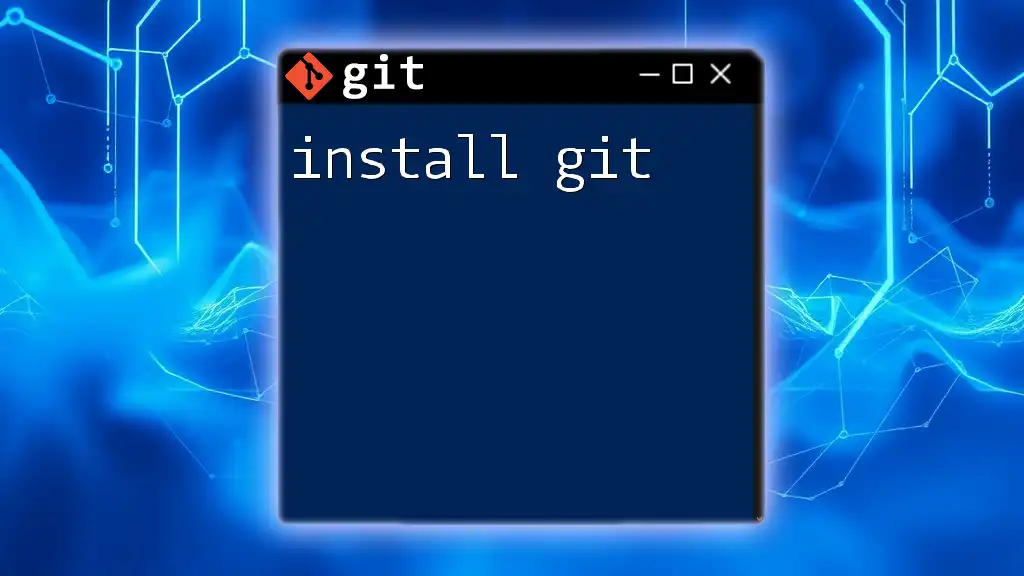
Troubleshooting `git pull`
Common Errors and Their Solutions
Errors can sometimes occur when using `git pull`. Here are a few common issues and how to address them:
-
Merge conflict: If you encounter this error, you need to resolve the conflicts in the affected files. Git will show you which files have conflicts, and you can edit them accordingly.
-
Nothing to pull: This message typically means that your local branch is already up to date with the remote branch. You can verify your current branch status with:
git status -
You have uncommitted changes: If you try to pull changes while having uncommitted modifications in your working directory, Git will prevent the pull. A quick solution is to stash your changes before pulling with:
git stash
Once you resolve any conflicts or complete your stash operations, you can perform another `git pull`.

Conclusion
Understanding how to effectively use the `git pull` command is essential for seamless collaboration in any software development project. By regularly pulling changes, resolving conflicts, and following best practices, you can maintain a healthy project workflow. Remember, the goal is to integrate code efficiently while keeping your local repository aligned with your team’s contributions. Regular practice and awareness of pitfalls will enhance your proficiency with `git pull` and foster a productive development environment.
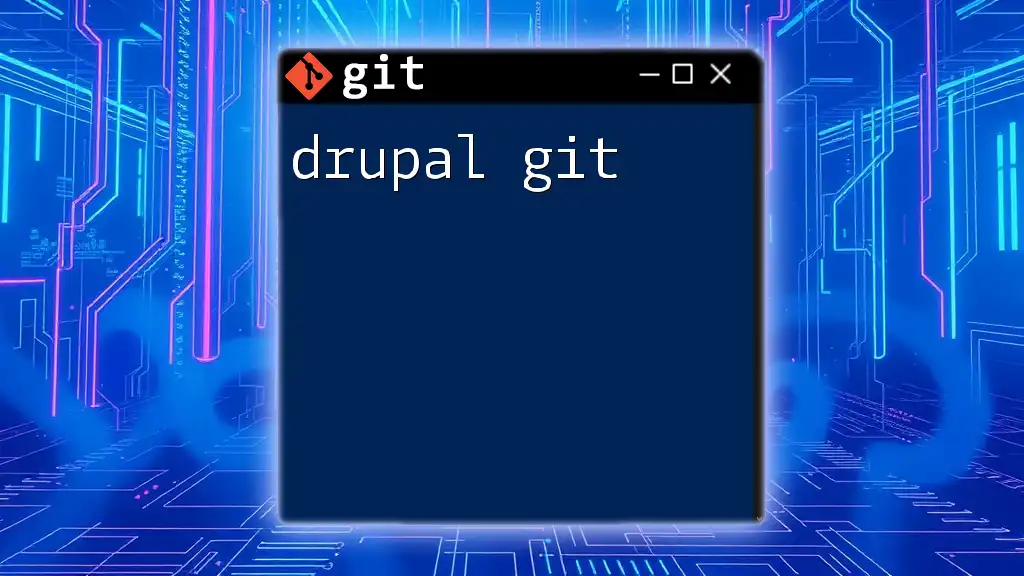
Additional Resources
For those eager to deepen their understanding of Git, consider reviewing the official Git documentation, exploring advanced Git workflows, or enrolling in online courses dedicated to mastering Git commands. Continuous learning will keep you ahead in the ever-evolving landscape of version control and collaborative software development.







